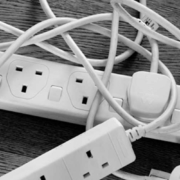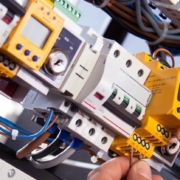Is My Electrical Equipment Is Safe?

How Do I Know If an Electrical Device or My Electrical Equipment Is Safe?
Is Your Electrical Equipment Safe? Do you have concerns about a specific electrical device. Electricity can be highly dangerous, so it’s important that you know what you’re dealing with when it comes to working with electronic devices.
Regardless of whether you’re changing a light bulb or rewiring a plug, the dangers of electricity have the potential to kill. Naturally, this leads to a high level of concern when working with electricity, but when it comes to electrical safety there’s a lot of misinformation floating around. So, to help keep you safe and confident, it’s time to take a look at how you can tell if your electrical equipment is safe.
What is an Electrical Device?
In simple terms, an electrical device is any device or peice of equipment that has a reliance on electricity for its operation. This devices can be large in size or small by nature and hardly seen or known they are there. They generally transform an electric input into a source of energy for its output.
Examples of an electrical device would be
- Rechargable batteris
- Electrical Motors
- Halogen or LED Lighting
- An Electric Toaser
- Electrical Heaters
- Fans
Making Sure Your Electrical Equipment and Each Electrical Device Is Safe
Before you start using any piece of electrical equipment, it’s important you establish that it’s safe to use and, equally important, that you know how to use it safely. The following steps are crucial to take when working with electrical equipment:
-
Risk Assessment:
Many people consider risk assessments to be unnecessary and a waste of valuable time, but the truth is that they exist with good reason. A well thought out risk assessment ensures that you are aware of the hazards associated with the equipment, the risks that these hazards cause and, finally, the ways in which you can minimise these risks e.g. isolating the power supply when maintaining the equipment
-
Inspect Electrical Equipment:
Visual checks are an essential part of staying safe with electrical equipment. Even if you’ve completed a highly thorough risk assessment, a visual check is still vital for ensuring that the equipment is safe to use. Therefore, make sure that you check the condition of plugs, extension sockets and electrical fittings for any visible signs of wear and tear. Anything which is even slightly suspect should be investigated further.
-
Ensure Users are Trained:
Anyone who is using electrical equipment needs to be fully trained on how to use it safely. So, for example, if specific safety wear is required to use the equipment – such as insulated safety gloves – make sure that any users of that equipment are issued with both verbal and written instructions.
-
Install a Residual Current Device (RCD):
The longer an electrical shock is allowed to continue, the more damage it can cause. Accordingly, the safest way to minimise the effect of an electric shock is to disconnect the electrical circuit as soon as possible. This safety measure is made possible by installing an RCD which can detect many electrical faults and then quickly disconnect the circuit. While an RCD won’t completely stop the chance of an electric shock it can significantly reduce the impact of a shock.
-
Carry Out Regular Tests:
Maintaining your electrical equipment is important for not only ensuring that it operates correctly, but also that it’s safe to use in between tests. Regular safety tests should be drawn up before the equipment is used for the first time and these checks must be strictly stuck to in order to reduce the risk of any electrical hazards being allowed to develop.
By following these safety steps, which are relatively simple compared to the potential outcomes from ignoring them, you’re positioning yourself and those around you in a much safer environment.





